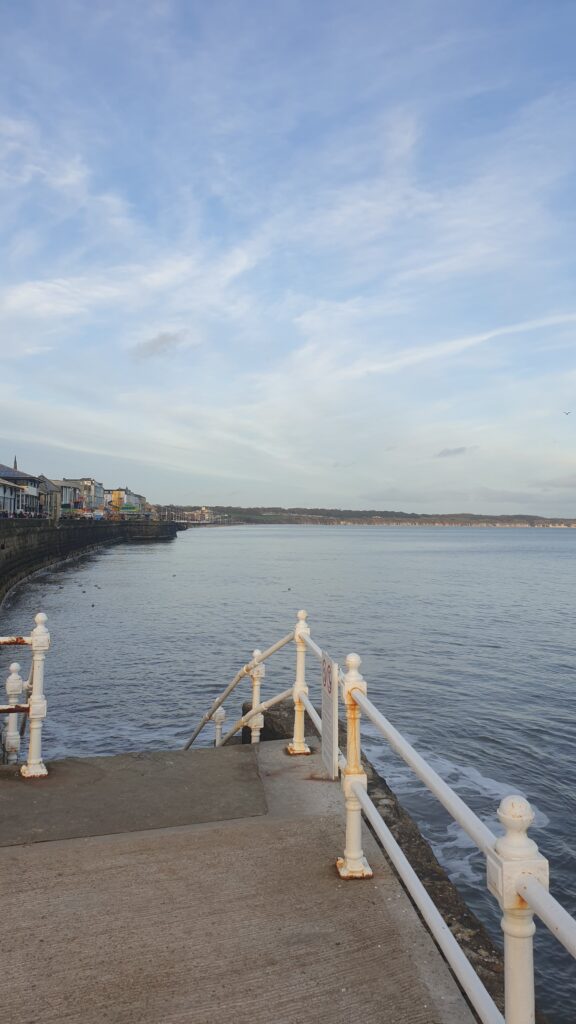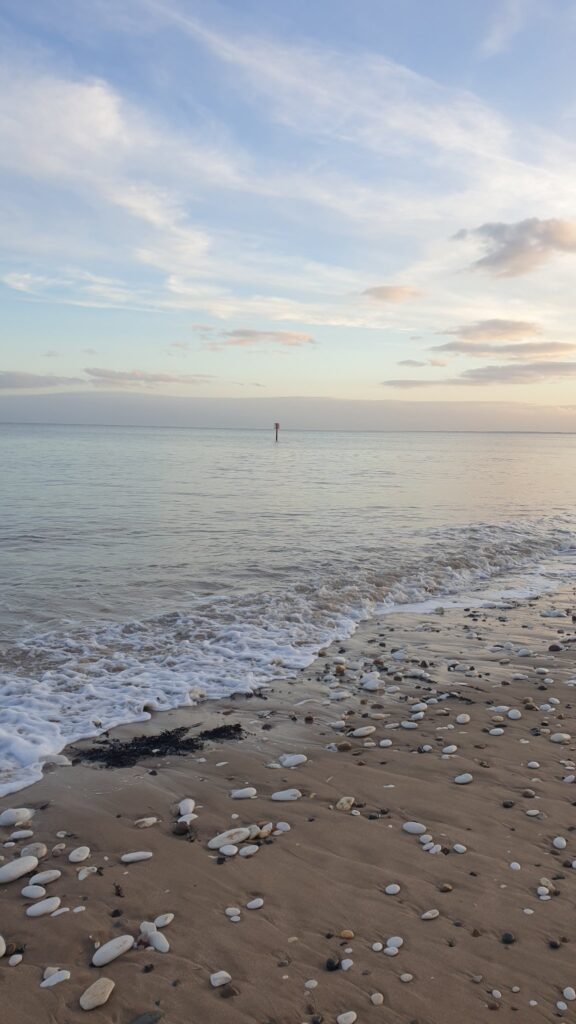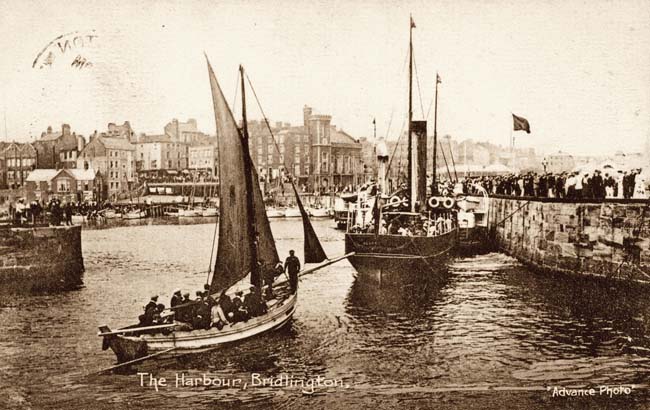I’ve just returned from a lovely weekend in Bridlington, in the very best company. It was surprisingly busy, as, unbeknownst to us, it was the grand unveiling of the east coast resort’s Christmas tree and illuminations. The resort has been a popular town for visitors for the last two hundred years, and in today’s post we’re going to look at one who is very much of interest to us: Charlotte Brontë.

The resort today has a lot to offer holiday makers of all ages, including stomach churning rides, golden sands and more fish and chip shops than you can shake a stick of Bridlington rock. Some things, and certainly some of the views, available there today would have seemed familiar to Charlotte, but one thing at least has changed: the resort’s name. In the first half of the nineteenth century it was called Burlington not Bridlington, and it was here that Charlotte Brontë came, in company with her great friend Ellen Nussey, for her first ever journey to the seaside.
In August 1839 Charlotte travelled by train to Ellen to what we now know as Bridlington, staying in a cottage in nearby Easton. Ellen Nussey later gave an account of the incredible effect the sea had on Charlotte:
“‘The day but one after their capture they walked to the sea, and as soon as they were near enough for Charlotte to see it in its expanse, she was quite over-powered, she could not speak till she had shed some tears she signed to her friend to leave her and walk on; this she did for a few steps, knowing full well what Charlotte was passing through, and the stern efforts she was making to subdue her emotions her friend turned to her as soon as she thought she might without inflicting pain; her eyes were red and swollen, she was still trembling, but submitted to be led onwards where the view was less impressive; for the remainder of the day she was very quiet, subdued, and exhausted. Distant glimpses of the German Ocean had been visible as the two friends neared the coast on the day of their arrival, but Charlotte being without her glasses, could not see them, and when they were described to her, she said, “Don’t tell me any more. Let me wait.”’

A love of the sea, and awe at its power, lasted for Charlotte – as we see especially in her novel Villette where the sea is both facilitator and destroyer – the channel (in a very real sense) for the beginning of Lucy Snowe’s adventure and the end of her dreams. Love of Bridlington lasted for Charlotte too, as when she was looking for a suitable location to open a school with sisters Emily and Anne Brontë the town was her first choice, although she later decided to try to open a school in Haworth.
Thank you as always for all your support for my blog – you can also now follow my YouTube account with the channel name House Of Brontë, my latest video looks at why the Brontë sisters used male names and the moving stories behind their choices.
I hope to see you next Sunday for another new Brontë blog post.

I love to think of Charlotte being over-awed by her sight of the sea. In an age of modern transport where we take the seaside for granted, and most people visit the seaside regularly from a very young age, it’s easy to be blase about it. To Charlotte, it was an absolute wonder, one that moved her to tears.
Thankfully, we have Ellen’s account of Charlotte’s reactions and because of this we can try to share her feelings.
Thank you, Nick.